Temporomandibular Joint Disorders (TMJD)
Introduction
This leaflet provides you with information which will help you understand Temporomandibular Joint Disorder (TMJD). If after reading the leaflet you have any questions, please speak to one of the nursing staff.
What is TMJD?
This is a common group of conditions leading to jaw pain and headaches. These conditions include Myofascial pain (muscle discomfort), Internal derangement (from injury, displaced disc, dislocated jaw) or Arthritis (effects of rheumatic disease).
TMJD can be due to a mechanical fault of the jaw joint, or a muscular problem of the surrounding muscles that control jaw movements, similar to having a twisted ankle or severe muscle cramp.
What is the TMJ Temporomandibular joint?
The TMJ acts like a sliding hinge joint, connecting the jaw bone (mandible) to the skull (temporal bone).
When you place your fingers just in front of your ears and open your mouth, you can feel the joint (condyle) each side.
Similar to any other joint, TMJ movement is controlled by muscles of mastication e.g. the temporalis, and masseter muscles, as shown, which enables talking, chewing, and yawning. There is a soft cartilage disc which acts as a shock absorber.
Simple try at home jaw exercises
Relaxed Jaw Position
Place the tongue lightly on the top of your mouth behind your upper front teeth, allowing the teeth to come apart and relaxing the jaw muscles.
‘Goldfish’ Exercise 1 (partial opening)
1. Keep tongue on the roof of your mouth.
2. Place one index finger on the TMJ.
3. Place your other index finger on your chin.
4. Allow the lower jaw to partially drop down and back with help from the index finger.
5. Monitor this partial jaw opening in a mirror to make sure the opening is straight (tongue stays up).
‘Goldfish’ Exercise 2(partial opening)
1. Keep tongue on the roof of your mouth.
2. Place one finger on each TMJ.
3. Allow the lower jaw to partially drop down and back to bring the chin to the throat.
4. Monitor this partial jaw opening in a mirror to make sure the opening is straight
‘Goldfish’ Exercise 3 (full opening)
1. Keep tongue on the roof of your mouth.
2. Place one index finger on the TMJ.
3. Place the other index finger on your chin.
4. Allow the lower jaw to fully drop down and back with help from the index finger.
5. Monitor this full jaw opening in a mirror to make sure the opening is straight (tongue stays up).
‘Goldfish’ Exercise 4 (full opening)
1. Keep tongue on the roof of your mouth.
2. Place one finger on each TMJ.
3. Allow the lower jaw to fully drop down and back to bring the chin to the throat.
4. Monitor this full jaw opening in a mirror to make sure the opening is straight
Repeat each of the ‘Goldfish’ exercises numbered 1 to 4 6 times. Do these exercises 6 times each day.
To progress: perform with tongue dropped off the roof of the mouth.
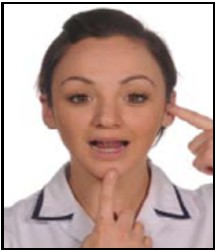
‘Goldfish’ Exercise 1 (partial opening)
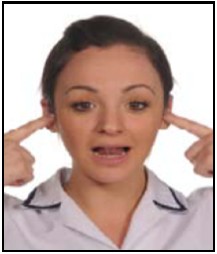
‘Goldfish’ Exercise 2(partial opening)
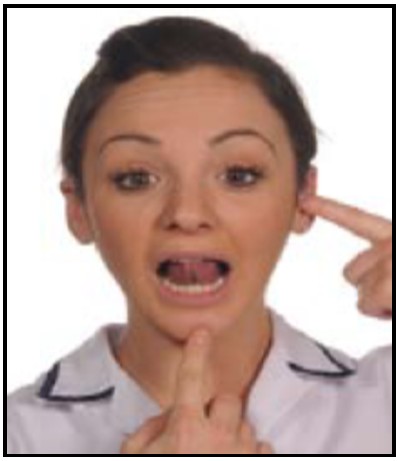
‘Goldfish’ Exercise 3 (full opening)
Mandibular Stabilisation Exercises
Maintaining the jaw in a neutral position, apply gentle pressure to the jaw using your index finger/thumb as demonstrated in the pictures below. On opening, move to left and right: Hold for 2 seconds, repeat 5 times, 5 times a day.
Mandibular Stabilisation Exercises (Advanced)
1. As above but with teeth separated one knuckle apart.
2. Hold for 2 seconds, repeat 5 times, 5 times each day.
Cervical Retraction ‘Chin Tucks’
Standing or sitting with shoulders back and chest up, bring your chin straight back, creating a ‘double chin’.
Do not allow your head to bend up or down as you do this.
Hold for 2-3 seconds, repeat 10 times
Mandibular Stabilisation Exercises
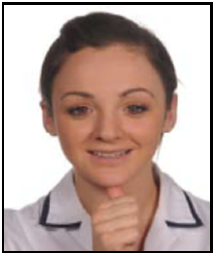
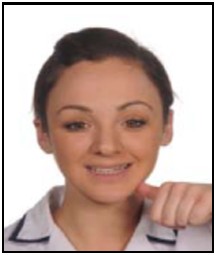
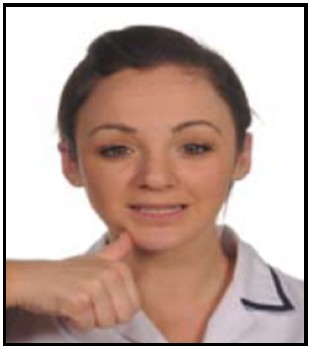
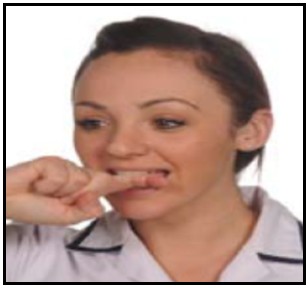
Mandibular Stabilisation Exercises (Advanced)
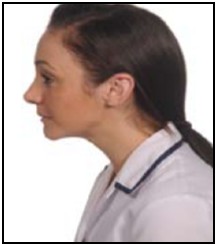
Cervical Retraction ‘Chin Tucks’
What Causes TMJ pain?
The exact cause and progression of TMJD is unknown, however over activity of the joint muscles is thought to contribute to pain as well as signs of being overworked, stressed, worried or anxious: Other pain caused includes:
· Excessive chewing. Chewing gum/chewy or hard foods.
· “Bruxism” Clenching or grinding teeth at night or daytime.
· Nail biting, chewing pen lids.
· Excessive mouth opening (wide yawning, laughing).
· Trauma or injury (e.g. punch to the jaw, road traffic accident, dislocation).
· Surgery (e.g. dental extractions or tonsillectomy).
· Arthritis and general wear of the articular disc.
The majority of symptoms can be short term and self limiting with plenty of rest and simple try-at-home treatment.
In some severe cases, significant long term pain lasting up to weeks or months may require specialist treatment.
How is TMJ diagnosed?
Your Dentist or GP can outline problem areas from details of your dental and medical history. It may also include examining the head, face, jaw and neck.
An examination of muscle spasm and the degree of mouth opening is assessed.
There are no formal tests to diagnose TMJD, but imaging scans (e.g. X-ray, CT scan or MRI) may be taken. This includes referrals to other hospital specialists for further investigations e.g. for ear/sinus pain.
TMJD Signs and Symptoms
- Radiating pain/ tension through face, jaw, neck.
- Headaches.
- Limited opening/closing or jaw lock. (Trismus due to muscle spasm).
- Painful Clicking, crackling, popping of the jaw on eating/speaking (articular disc sliding over each other).
- Change in bite (how the teeth meet together).
Reassurance and Take Home advice
Support your chin with your hand on yawning.
Use warm compress / bean bag / towel wrapped hot water bottle or alternatively, icepacks over the affected side up to 20 minutes.
- Try Relaxation techniques to reduce exposure to stress.
- Avoid eating hard, tough or chewy foods.
- Avoid taking large bites / wide mouth opening. Try mashed/ puree diet or cutting food up into manageable small bite-sized pieces.
- Avoid / stop biting your nails, chewing gum/ pen lids etc.
- Avoid making your jaw click on purpose.
Further information
www.patient.co.uk/health/Temporomandibular-Joint-Disorders.htm
www.intelligentdental.com
Contact Details
